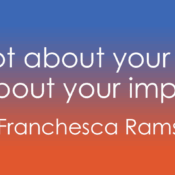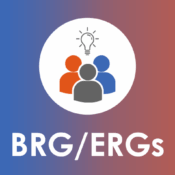
Establish Value: Create Equitable Experiences for Deaf Individuals
My wife and I have a “love and hate” relationship with an online grocery ordering service from one of the largest grocery store chains in the Chicagoland area.
Shopping online for food and other necessities we need is a time-saver.
However, as deaf individuals, picking up our order at the store has been anything but positive, albeit the free cookies we receive with every pick-up.
Shortly after our groceries are “picked,” we receive an email informing us that our order is ready. This is where the equitable experience ends for us:
- If items are out of stock, we receive a phone call from the store to discuss replacement options.
- When we arrive to pick up our order, we have to call the store and let them know we arrived.
You may be thinking… well, that doesn’t seem so bad.
It’s not okay.
Business leaders are responsible to ensure customers’ experiences amongst each touch point result in a positive experience.
As Paul Greenberg, author of the best-selling CRM at the Speed of Light and President of The 56 Group, shared, "If a customer likes you and continues to like you, they will do business with you. If they don’t, they won’t."
During my call with management from the grocery chain headquarters, it was an opportunity for me to share a different perspective that likely was not discussed or considered when implementing the ordering service program. This included the experiences a deaf person has when using video relay service (VRS) to make phone calls not being comparable to a hearing individual simply picking up the phone and making a call. There are often delays to connecting with an interpreter and occasional issues with cellular network reliability (wireless technology has improved over the years, but is still not as fast as a wired connection on a local network). I also shared the chain’s set-up is not fully accessible to hard of hearing and late deafened individuals who use captioned telephones.
I recommended alternative options to ensure a more equitable experience for all, including in-app texting capabilities and a notification button in the app to inform the store of a customer’s arrival. These solutions would benefit deaf, hard of hearing and late deafened individuals, as well as any other shopper utilizing the shopping service.
While the immediate pushback was related to prohibitive costs, I wondered if this was also a case of middle management not wanting “more work” added to their plate.
Nonetheless, management made assurances our future experiences would be better as they would pay extra attention to our orders and text us when needing to communicate regarding product unavailability, etc.
However, our experiences have not improved.
Initially, our first experience in using the service after a phone call with the chain’s management was positive. The person who picked our food texted us with some changes made to our order and advised us to text her when we arrived. We followed her instructions, but did not receive a response for more than ten minutes. It was not until we called the store using VRS that we finally received a response and our food.
We subsequently emailed store management after this experience and have not received a response addressing our concerns for more than two weeks.
And, yes, we used the service once again. After our latest order was picked, I received a phone call to my cell phone, not via a text message as management promised.
When calling back via VRS, the person at the store who answered the phone was confused why we were calling through VRS and almost hung up on me. After the interpreter explained VRS again, we proceeded with our call.
At this point, we are seeking alternative options.
These frustrations are commonplace amongst deaf, hard of hearing and late deafened individuals.
When a deaf, hard of hearing or late deafened customer asks for improved, sustained communication access, the initial response is often pushback due to perceived prohibitive “costs” of making a business accessible.
Yet, businesses spend thousands of dollars up-front to ensure accessibility by installing ramps and automatic doors, solutions benefitting not only the intended population that they are designed to serve, but also senior citizens who are less mobile and parents with strollers.
Why don’t businesses take a similar approach when it comes to building equitable, accessible products and services from the get-go?
When businesses create products and services with marginalized communities in mind, everyone benefits. Economies of scale are realized as businesses become more efficient. Businesses protect against negative impacts of turnover and liability. Perhaps most important, consumers’ experiences amongst brand’s various touch points are improved, thus positively impacting brand equity and, in turn, profitability.
At the end of the day, a commitment to accessibility should not be viewed as an expense, but as an investment in ensuring as many people as possible can benefit from your company’s products and services.
If you would like an assessment of how accessible and inclusive your business is, please click here to schedule a mutually convenient time for us to meet and discuss how your business can axend.



